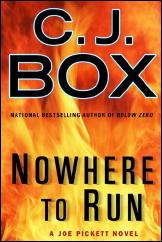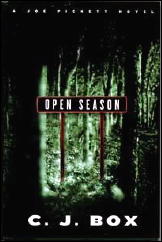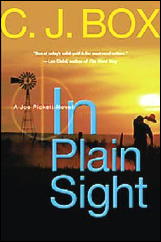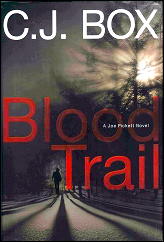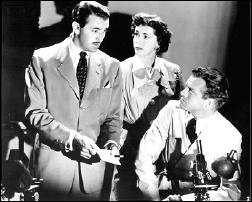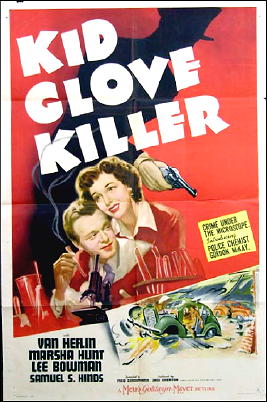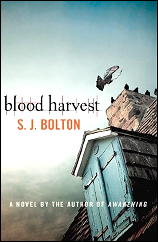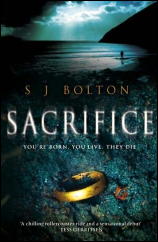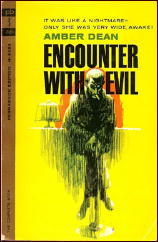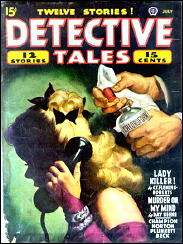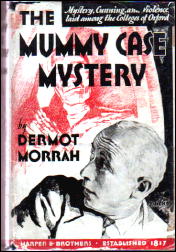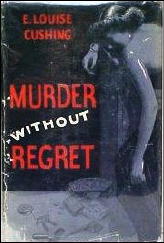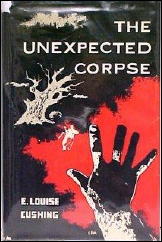Reviewed by DAVID L. VINEYARD:
BILL PRONZINI – The Hidden. Walker & Co., hardcover, November 2010. (Available for pre-order online.)
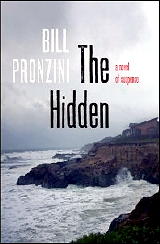
No one currently writing orchestrates the elements of the suspense novel with half the finesse of Bill Pronzini. If that were all — and it would be enough — he would be our best suspense novelist, but he also gets inside of the head of the characters in his novels and gets them into our heads, all done with simple elegance, and without the sturm und drang of many lesser writers.
We don’t just identify with his characters, we experience with them. We get to know them; innocents, and not so innocents, madmen, lovers, and killers, all drawn simply with a few deft strokes that none the less present fully developed characters — people we recognize and know, and sometimes are.
Jay and Shelby Macklin are a young couple in crisis, emotional and financial crisis. Jay is emotionally remote and withdrawn (“All his life he had been a closed book, not just to her and others, but to himself too.”), Shelby is hurt and has fought for their marriage about as long as she is willing to (“Twelve years of marriage to him had sucked the youth out of her.”).
The two of them are taking a Christmas vacation at a friend’s vacation home on the rugged Northern California coast.
Their timing could be better. Since midsummer the coast has been haunted by the so called Coast Line Killer, a murderer whose motives are obscure and who seems to strike randomly. For a number of reasons this holiday is a less than wise choice for the troubled couple, not the least Shelby’s nyctaphobia, her fear of the dark:
… she’d never quite lost her fear of the dark.
She had it as far back as she could remember. Not of ordinary darkness, the light-tinged kind where you had some limited vision of objects or shapes. Of blackness so complete you couldn’t see anything at all, the kind a blind person must feel …
Pronzini has already introduced us to the killer, and his motive, to protect the rugged coastline from any and all intruders, so we know ahead of time what sets him off, and wait breathlessly for the young couple to cross his deadly path. And even here Pronzini rings in changes and surprises that both fill our expectations and take us in new directions.
His killer is no monster, no sex-obsessed cartoonish serial killer leaving a trail of extravagant sado-masochistic crimes behind him, but instead a quiet man become reluctant and rather tired avenger of the vulnerable coast. It is because his crimes seem so mundane and so reasoned that he is frightening.
He is the stuff of headlines, not nightmares. He is frightening for being familiar, for being someone we might know, might see in our daily lives, might not notice until it is too late:
Clouds shifted away from the moon, and the wind and the slow-breaking waves lit up with a kind of iridescent white glow. A long yellow white streak appeared on the ocean’s surface, extending out over some of the offshore rocks where the gulls nested, giving their limed surface a patch-painted look. He paused to take in the view. Nice night. He liked nights like this, quiet, peaceful, empty, as if he had the sea and the scalloped shoreline all to himself.
As has happened in past Pronzini novels the setting, the Northern California coast where Pronzini lives, is also a character in the novel as is the weather, in this case a brutal winter storm.
And with those elements set in motion he then begins to add the twists and refinements. Not far from where Jay and Shelby are staying two other couples are also vacationing in a sort of domestic hell that makes the Macklin’s problems look simple.
Human nature, the weather, too great passion and passion dying, a madman, human weakness, and human fears — these are the ingredients Pronzini stirs into his mix, having already warned us with his choice of epigraphs from Georges Bataille and Friedrich Nietzsche as well as his title that it is not the obvious dangers that should concern us, but those things we hide from others and from ourselves.
Theme, plot, setting, and character are one, a grand design, and a unity, not merely disparate entities thrown together.
The monsters are not in the outer dark, but the inner dark we create within ourselves. Shelby has more to fear from that inner dark than anything lurking on the outside, even the Coast Line Killer:
The night seemed alive with shrieks, whistles, fluttery moans.
His Coast Line Killer is, much like the great storm that spawns the breathless climax of the novel, only a force that brings those hidden things to the surface. Not all the violence, nor all the crime in the novel arises from the disturbed man’s actions though like the storm his presence and his actions bring things to a head. There are other currents and other crimes that will test Jay and Shelby to their limits, and in Jay’s case an enemy more implacable and deadly than any serial killer, and begin the process of healing — or end their lives.
There are no easy answers in Pronzini’s novels, whether suspense or his tales of his private detective Nameless. Heroism can come down to putting one foot in front of another because you have to, to showing simple courage in face of madness, to overcoming a phobia, a childhood trauma, ourselves, to discovering how much you love another, and to just doing the right thing. Survival can hang on those small things as well. Sometimes heroism and love comes down to saving each other:
He was just a man who’d finally stepped up, finally proved to himself — and, if he was lucky, to her — that he wasn’t a failure or loser after all.
The Hidden is a fairly short novel in these days of bloated best sellers, tightly written and tightly plotted, but never mechanical or obvious. It is strongly cinematic, but the pleasures, as always with Pronzini, are in the writing and not merely his visual sense.
His characters are recognizable people, not merely pawns to the suspense element. There is always a sense that they exist beyond the confines of the novel, that they are people and not merely characters.
You will reach the end of the book emotionally drained and with nerves on edge, but like the master that he is, Pronzini manages to let you off the hook without ever quite letting you forget just how tight the pinch was.
It is not a book you will close and walk away from. Things linger, not just the frights, but also those moments of recognition when he cuts close enough to the bone for most of us to recognize ourselves and the hidden within us.
Bill Pronzini doesn’t need much introduction here. He is a six time Edgar nominee, three time winner of the Shamus award, winner of the Grand Master award from the Mystery Writers of America, creator of the Nameless series of hard boiled mysteries, anthologist, genre historian and critic, western novelist, and has collaborated with numerous writers including Barry Malzberg and wife mystery novelist Marcia Muller.
But to put this book in perspective, it would be a major book and a fine suspense novel from any writer. It is perhaps the best tribute we can pay to a writer as accomplished as Bill Pronzini to simply say that if he had no history as a writer and had written nothing else, this book would mark him as one of the finest voices in the suspense field today.
Such consistent quality may sometimes lead us to take a writer for granted. We should not. A new book by Bill Pronzini should be a reason for celebration. This one certainly is.

